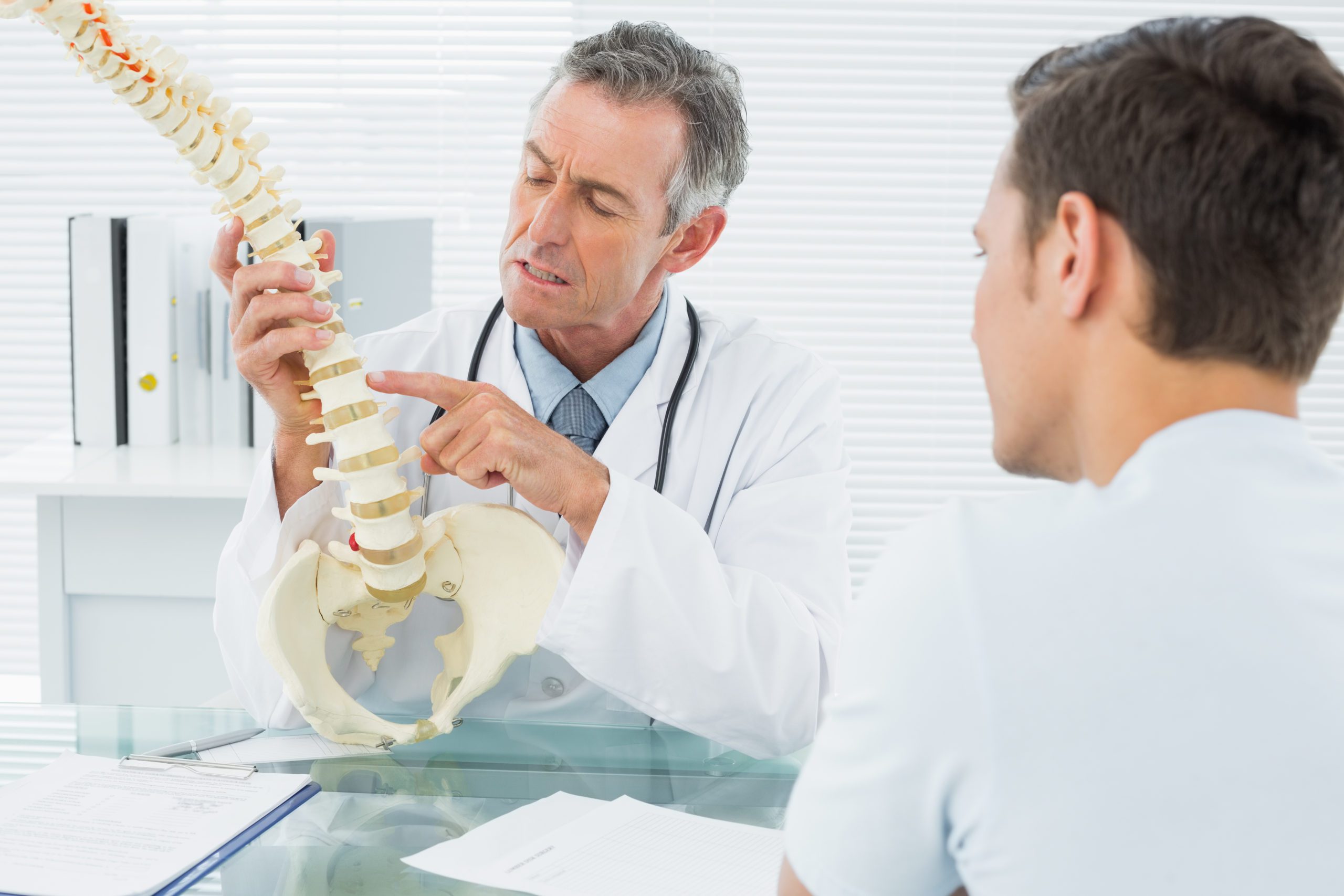Your spine is like a tower without a foundation. If a structure like this actually existed, it would fall down in pieces, especially if it was constantly moving or being bumped around. The reason this doesn’t happen to your spine is because a complicated system of “ropes” is at work keeping it in a stable position. These “ropes” are LUMBAR STABILIZERS: the back muscles on the posterior surface of your body’s lower mid-section, being balanced by the abdominal muscles on the front.
Advice
Your back muscles are a woven net of muscle fibers and tendons. They begin from the sacral bone (near your tailbone) and stretch upwards to the very nape of your neck. Some of these fibers spread over one vertebra, some spread over two vertebrae, and other fibers interlace over several vertebrae. These muscle fibers run in various directions. Some are straight, some are parallel to the spinal axis, and some are oblique, or diagonal. This is what allows the muscles their ability to move your vertebrae in different directions.
Some parts of these muscles that lie close to the spine are buried so deeply, that even the strongest and most skilled massage therapist can’t come close to touching them. These are the muscles that most often contract to produce a long and painful muscle spasm that we feel as back pain. By the way, spasms of the back muscles can occur under the worst circumstances, such as hypothermia, ruptured discs, heat exhaustion or other serious conditions.
Traditional exercises, like bending over from the waist, are just not enough to train these deep-lying back muscles or cause any change in them. Besides, movements like this can do more harm than good! But isometric static gymnastics loads ALL the muscles. Superficial muscles, as well as those that are deeply buried. It allows them to be safely trained and conditioned. If you are already suffering from muscle spasms because of a disease, you can do isometric exercises based on waving motions to relax the spasms. (See the exercises listed under the “String” complex).
Your abdominal muscles are the antagonists of your back muscles. This means that they balance the work of the back muscles by opposing them from the front. It’s hard to understand how this works! How can the abdomen affect the spine, when the straight, oblique, and transversal abdominal muscles are not attached to the spine at any point? Is it ESP? Is it through magic or mind-games? None of those are right. Keep reading:
There are no wizards or aliens inside your body! It is so much more complex than a robot! Your abdomen controls the spine through a complex system of fascia, membranes, and ligaments. In particular, the abdomen creates intra-abdominal pressure, even if it is very weak and not very well developed. This pressure is necessary to keep your internal organs where they belong, and at the same time to maintain the right pressure inside the intervertebral discs.
Inside of each intervertebral disc, at the very center, when all is well with your world, is the disc core. When the core is centered inside the disc, any back pain associated with the disc vanishes. Poof! Gone! Disappears! You can use this magic bullet in your everyday life. It’s simple. It’s easier than one-two-three, because it’s only one-two.
When you feel pain in your lower back, whether you’re sitting or standing or lying, here’s what you can do:
1. Get your low back in a straight position (sit up straight, stand up straight or lying down and straighten your back)
2. Pull in your stomach: strain or tense your abdominal muscles (suck in your gut).
At this moment, your pain will diminish and then disappear. FYI: This is the way a lumbar corset works. It straightens your low back and pulls in your stomach.
Here’s a question I get asked a lot: Do you have to train your abdominal muscles, (which we now all agree are crucial for the health of our back), by practically killing yourself bending and unbending on a bench at the gym? (AKA: “crunches”)
MY ADVICE: When the maximum bend is in your lower back, a huge amount of stress is placed on your intervertebral discs and joints (despite how much you contract the abdominal muscles and increase intra-abdominal pressure). At that moment, disc rupture, joint damage and/or injury to the ligaments can occur. That’s why popular exercises like bending on a bench or on the floor, “crunches,” can be harmful for your back, especially if you already have any spinal or back disorders or conditions.
Isometric static exercise is the best and safest way of back and abdominal muscle training. We developed a lot of exercises in our system that can help you strengthen your lumbar stabilizers and your entire spinal column. The abdominal muscles also help create the primary movements in many of these exercises, so that’s an additional benefit that will improving your spinal health.
Summary
1. Coordinated work of the muscle-stabilizers (back and abdominal muscles) is necessary for the correct functioning of a spine.
2. In the isometric static gymnastics system the spinal muscle-stabilizers are strengthened in the safest possible way.
3. Special exercises in the isometric gymnastics system are able to eliminate pain and spasms of the long muscles of the back.
4. It’s necessary to strengthen the abdominal muscles in order to eliminate chronic pain in the spine and lower back.
Read more about the exercises Here.














Leave a Reply
You must be logged in to post a comment.